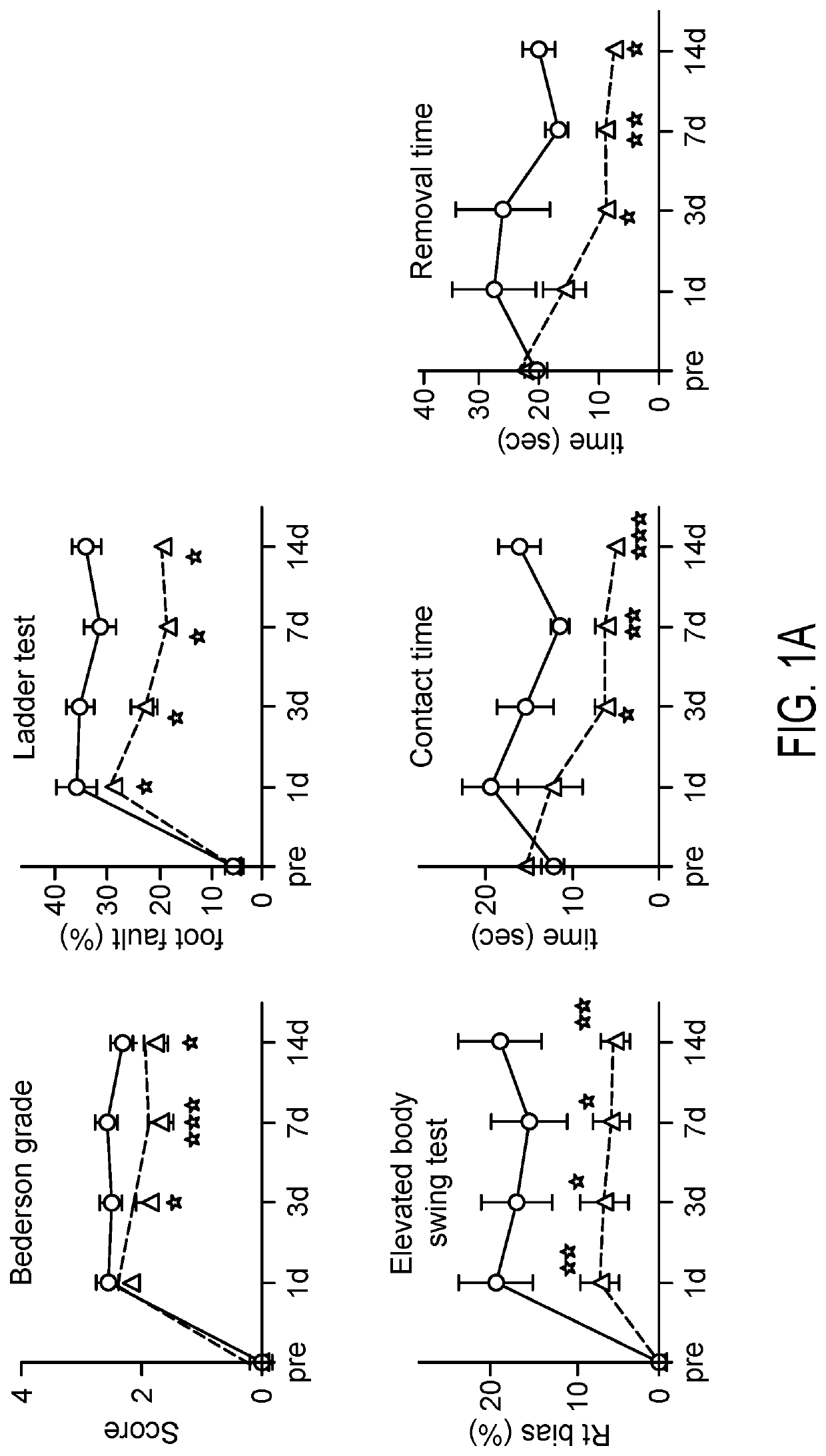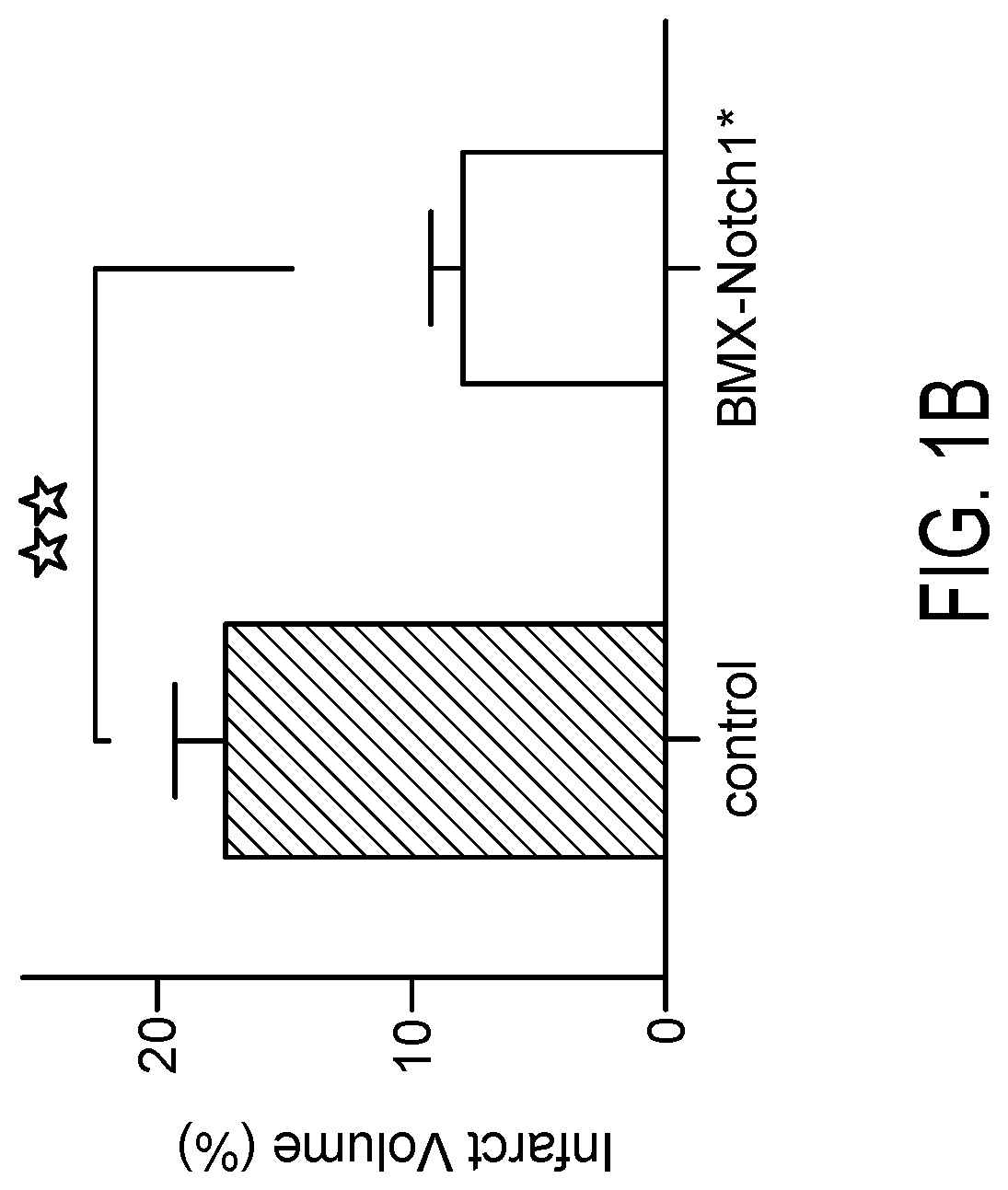Treatment of Vascular Occlusion by Activation of Notch Signaling
a notch signaling and vascular artery technology, applied in the direction of cardiovascular disorders, drug compositions, peptide/protein ingredients, etc., can solve the problems of poor blood supply, hypoperfusion, ischemia, etc., and achieve the effect of improving blood flow, enhancing notch signaling, and beneficial effect on blood flow or circulation
- Summary
- Abstract
- Description
- Claims
- Application Information
AI Technical Summary
Benefits of technology
Problems solved by technology
Method used
Image
Examples
example 1
Inducible Arterial Notch Signaling
[0106]To study the effects of Notch signaling in mouse models of ischemia, constitutively active forms of Notch1 and Notch4 were used, denoted Notch1 ICD and Notch4*, respectively. Notch1 ICD comprises a truncated Notch1 receptor intracellular domain (ICD) without the transmembrane or extracellular domains, functionally replicating a cleaved Notch intracellular domain and being constitutively active upon expression. The Notch4* mutant comprises a truncated Notch4 receptor with transmembrane and intracellular domains without the extracellular domain, and it is constitutively cleaved into Notch4 ICD. Therefore, Notch4* is functionally constitutively active upon expression. Notch1 ICD or Notch4* thus increase Notch signaling when expressed in a cell.
[0107]The expression of these two mutant Notch genes were placed under the Tetracycline (Tet) Response Element (TRE), which is activated by tet transactivator (tTA), in a tetracycline (tet)-OFF gene express...
example 2
tivation of Notch Signaling Through Notch1 Intracellular Domain (ICD) Expression Promotes Recovery in a Mouse Model of Ischemic Stroke
[0111]Notch1 ICD expression was induced in BMX-Notch1 ICD mice by administration of tamoxifen, 14 and 13 days prior to experimental stroke induced by dMCAO procedure as known in the art. Control and BMX-Notch1 mice were subjected to dMCAO procedure. Neurological function was tested pre- and post-dMCAO. Arterial activation of Notch1 improved neurological recovery after dMCAO. Neurological functions were assessed (FIG. 1A), including by modified bederson's grading, elevated body swing test, ladder test, and adhesive test. BMX-Notch1 ICD mice demonstrated better neurological recovery after dMCAO surgery, compared with control mice. H&E staining showed less infarct lesions in BMX-Notch1 ICD mice, compared with control mice. Quantification of infarct volume showed significantly less (p<0.01) infarct volume in BMX-Notch1 ICD mice, compared with control mice...
example 3
emic Notch Signaling Activation Promotes Neurological Recovery, Reduction of Infarct Volume, and Increased Growth of Collateral Arteries
[0116]The previous results demonstrate that improved outcomes following ischemic injury in the brain may be achieved by the activation of Notch signaling, prior to and following injury. To demonstrate that this effect can be applied in a post-injury treatment context, an experiment was performed wherein Notch activation was induced after ischemic insult. In these trials, control and mutant Notch mice were subjected to dMCAO, followed by induction of Notch ICD expression by tamoxifen administration. To establish Notch signaling activation after stroke onset, tamoxifen (2 mg / body, ip) was injected on two consecutive days immediately after dMCAO surgery.
[0117]Arterial activation of Notch1 after ischemic injury improved neurological recovery. Prior to and following dMCAO ischemic injury, neurological functions were assessed (FIG. 3A), including by modif...
PUM
| Property | Measurement | Unit |
|---|---|---|
| time | aaaaa | aaaaa |
| time | aaaaa | aaaaa |
| weight | aaaaa | aaaaa |
Abstract
Description
Claims
Application Information
 Login to View More
Login to View More - R&D
- Intellectual Property
- Life Sciences
- Materials
- Tech Scout
- Unparalleled Data Quality
- Higher Quality Content
- 60% Fewer Hallucinations
Browse by: Latest US Patents, China's latest patents, Technical Efficacy Thesaurus, Application Domain, Technology Topic, Popular Technical Reports.
© 2025 PatSnap. All rights reserved.Legal|Privacy policy|Modern Slavery Act Transparency Statement|Sitemap|About US| Contact US: help@patsnap.com



